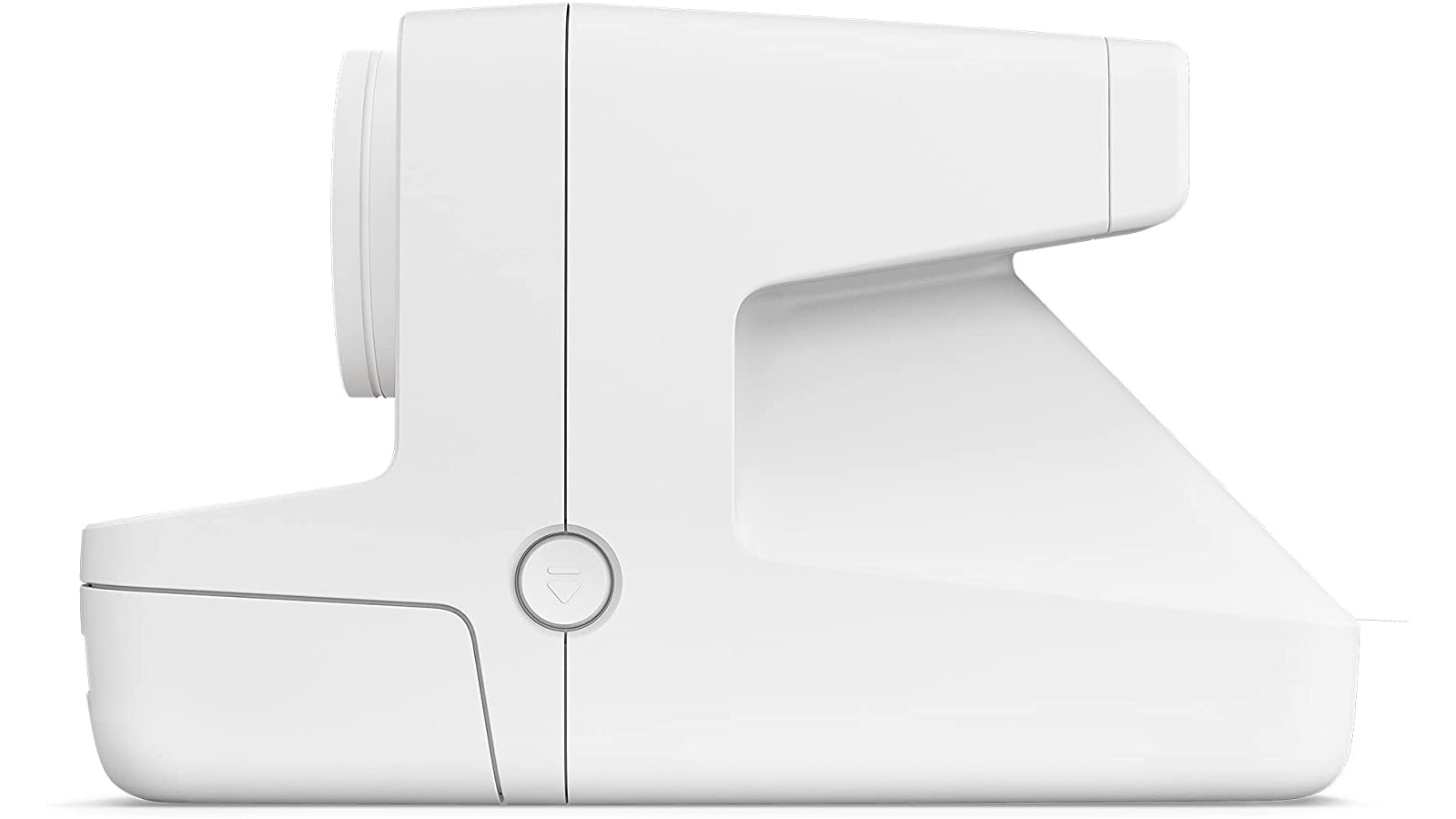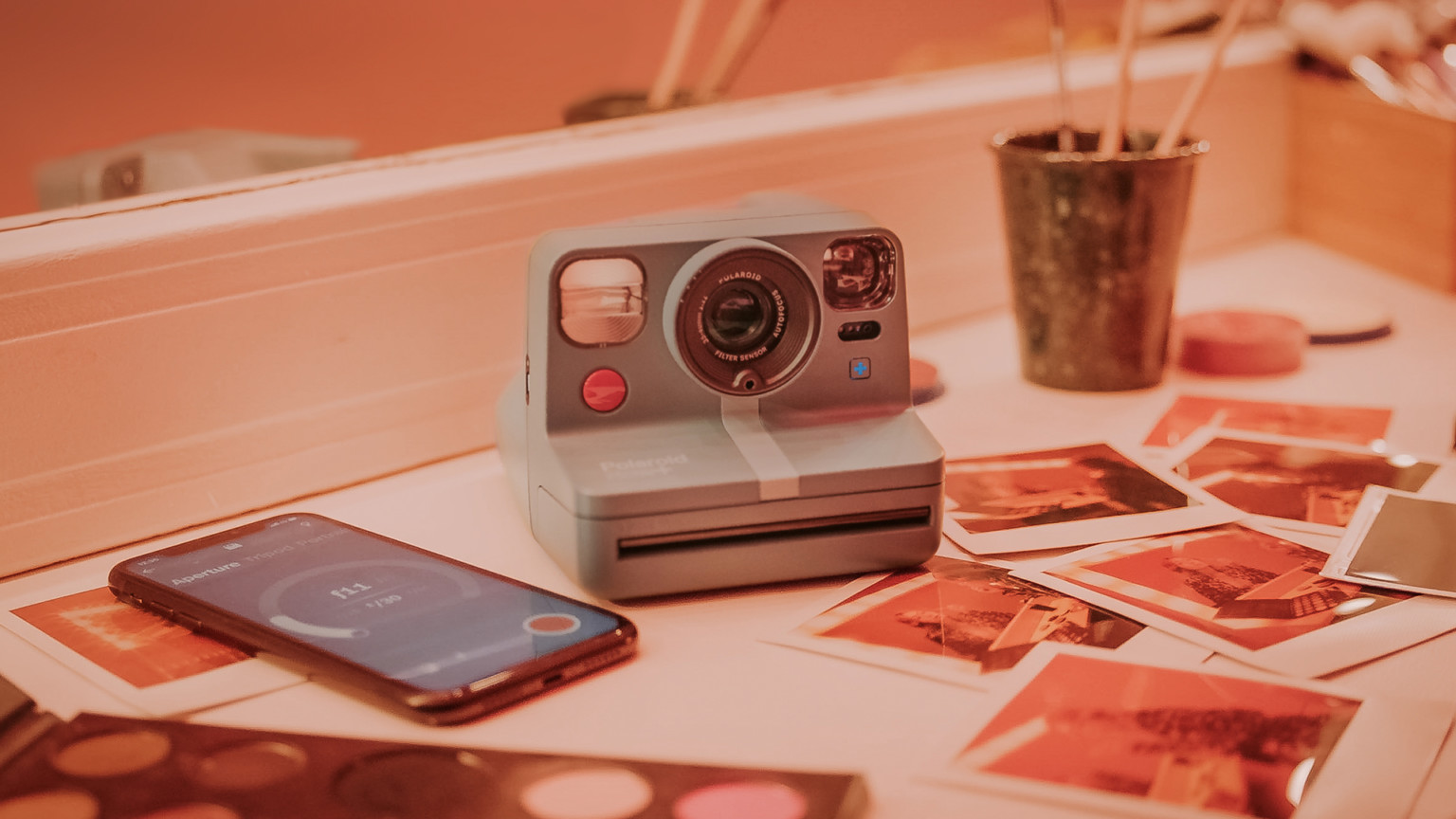Our Verdict
The Polaroid Now+ is the best Polaroid camera, and probably the best instant camera, full stop. It produces gorgeous images full of detail and character, and thanks to the revamped app experience, users have more options than ever for creating retro-styled Polaroid prints. The only real downside is one that’ll keep on hurting – the film is expensive, discouraging play and experimentation in a format that otherwise seems built for it.
For
- Gorgeous proper-size prints
- Genuinely good app integration
- Manual exposure control
Against
- Continually pricey to run
- Overexposes easily
Why you can trust Creative Bloq
In our Polaroid Now+ review, we’re going to be looking at what might be the best instant camera ever made. Since the brand’s unexpected and welcome revival by the Impossible Project in 2017, Polaroid has gone from strength to strength, releasing a range of instant cameras including the sophisticated Polaroid OneStep+, the pocket-sized Polaroid Go, and the straightforward Polaroid Now.
• Compatible films: Polaroid i-Type, Polaroid 600
• Lenses: 40mm standard, 35mm close-up
• Power: Lithium-ion 750mAh battery, charges via USB
• Tripod mount: yes
• Construction: Polycarbonate + ABS plastics
• Dimensions: 150.16 x 112.2 x 95.48mm
• Weight: 457g (without film pack)
Released in late 2021, the Polaroid Now+ is basically a combination of the OneStep+ and the first Now. It inherits the streamlined looks of the Now and the Bluetooth-powered app control from the OneStep+. Meanwhile, a revamped app experience gives users more digital control than ever, making the Polaroid Now+ perhaps the firm’s most ambitious blend of old and new to date.
As an instant film enthusiast, I’ve tried out almost all of the Polaroid cameras since the revival, except the little Polaroid Go, and I’ve also used my share of the firm’s biggest rival – the Fujifilm Instax cameras, which produce smaller but cheaper prints. It’s my firm opinion that Polaroids are some of the best point-and-shoot cameras you can buy, as well as the best cameras for beginners, as they offer knockabout fun and produce great-quality photos that can be held in the hand, rather than languishing forgotten on a hard drive.
But does the Now+ live up to what’s come before? It adds a fair few features, and corrects a few annoyances from previous iterations, so is it the perfect instant camera? Let’s dive in and see how well it does in our Polaroid Now+ review. And if you can’t get enough retro style, check out our guide to the best film cameras for beginners as well.

Polaroid Now+ review: build and handling

Anyone who used a vintage Polaroid probably remembers it being a chunky camera, and the Polaroid Now+ continues in that tradition. It’s a two-hander to operate, which does make sense given the size of prints that come out. There’s a powerful flash that operates by default (you can manually deactivate it with the flash button), and an optical viewfinder that provides a semi-accurate representation of what’s going to appear in the scene. It’s best not to worry too much about lining up compositions precisely – point the lens in the right direction and you’ll probably be okay.
The Now+ adds a tripod mount into the mix. You may or may not get much use out of this, but it’s definitely nice to have for group shots. Otherwise, it inherits the two-lens autofocus system from the first Now, with a 35mm close-up lens and a 40mm standard lens. In a cute touch, it also comes with a pack of coloured clip-on filters for giving your shots a certain tint – blue, yellow, orange, red vignette, and starburst (adds points to light sources).

There’s not a huge amount to say about the physical operation – when you want to take a picture, you hit the unmissable red shutter button. You wait for a tantalising second, resisting the urge to point the camera at your own face to check if it's working (trust me on that), then the shutter fires, and a print comes out. Put it aside – don’t shake it – and ten minutes later, it’s developed.
Daily design news, reviews, how-tos and more, as picked by the editors.
Polaroid Now+ review: smartphone app

It’s worth talking about the app in detail, as it’s key to a lot of what’s new with the Polaroid Now+. Connecting via Bluetooth, the app adds all sorts of functionality – you now get a self-timer that can go up to 12 seconds, and various shooting modes including light painting, portrait mode, double exposure, and manual exposure control. With these plus the aforementioned lens filters, you could spend a good old while and a big chunk of film experimenting with the Polaroid Now+.
The app works wonderfully. Pairing is quick and easy, control is instinctive and the UI design is bright, clear and intuitive. Some users may bemoan the fact that certain modes and functions are only available via the app, but this is a price of keeping the camera body design as simple as it is – and it’s worth mentioning that if you don’t want to use the app, you don’t have to. You can point and shoot just fine without it.
Polaroid Now+ review: performance

Nostalgia ain’t all it’s cracked up to be. Some things, like Tamagotchis, lace-up jeans and drinking from a hose, deserve to stay in the past. I want to make the case, however, that Polaroid photos are just as good as you remember. Maybe better – in this age of near-infinite disposable imagery, there’s something extra-special about a physical print you can hold in your hand.

The image quality from the combination of the Polaroid Now+ and Polaroid I-Type film is gorgeous. The sharpness and contrast of the prints are top-notch, blowing Instax frames out of the water in terms of detail and character. This may be a matter of opinion, but I think Polaroid photos capture the vintage look and feel a lot better than Instax prints do.
They’re big enough to display, clear and large enough to see what’s going on without a magnifying glass, and they’ve got that iconic white border that everyone recognises instantly. I’ve used various Polaroid cameras at parties and gatherings since the original OneStep 2, and they always go down well – to the point where multiple people who tried them out immediately went off and bought one of their own. They’re great, and the Now+ is the best one yet.
You may have sensed that there’s a “but” coming...

But…
Something you unavoidably have to talk about with modern Polaroid cameras is how expensive they are to run. Sure, the prints look much better than Instax – but they’re priced higher, too. And this is a price you’ll have to pay, repeatedly, whenever you want to use the camera. Through the official store, a pack of just eight I-Type prints costs $14-16 / £13-16, depending on how much you’re willing to buy in bulk. This is not an insignificant amount of money considering you'll be wanting a lot of these.

This in turn exacerbates other issues with the camera. The metering system on the Polaroid Now+ has a bias towards overexposure, and if left to its own devices, can and will deliver blown-out images with too-pale faces. In most cameras, that’s mildly annoying. In a camera where a fluffed shot equates to $2 down the plughole, it’s a wee bit more so. Having manual control in the app theoretically helps, but realistically, in the kind of knockabout situations where a Polaroid camera will be used, are you going to want to juggle your smartphone and a two-handed camera?

This is an issue with Polaroids in general, not specifically the Now+. But the thing is, everything about the Now+, from the extra lens filters to the creative shooting modes, seems built to encourage experimentation, which is then actively discouraged by the high price you’re paying per shot. It’s not clear what Polaroid can really do to solve this problem, and there are plenty of users out there (me included) who like the photos enough that they’re willing to eat the cost. Not everyone will.
Polaroid Now+ review: verdict

If you like fun, analog, retro photography and making real prints that you can put on a wall, or in a scrapbook, the Polaroid Now+ is the best camera you can buy. It’s full of fun features, simple enough that anyone can use it, while offering enough depth of control to cater to enthusiasts. You just have to be willing to keep paying the premium that Polaroid prints require, and learn to stay sanguine when one of your expensive shots is compromised by a slightly unreliable metering system.
Read more:
out of 10
The Polaroid Now+ is the best Polaroid camera, and probably the best instant camera, full stop. It produces gorgeous images full of detail and character, and thanks to the revamped app experience, users have more options than ever for creating retro-styled Polaroid prints. The only real downside is one that’ll keep on hurting – the film is expensive, discouraging play and experimentation in a format that otherwise seems built for it.

Jon is a freelance writer and journalist who covers photography, art, technology, and the intersection of all three. When he's not scouting out news on the latest gadgets, he likes to play around with film cameras that were manufactured before he was born. To that end, he never goes anywhere without his Olympus XA2, loaded with a fresh roll of Kodak (Gold 200 is the best, since you asked). Jon is a regular contributor to Creative Bloq, and has also written for in Digital Camera World, Black + White Photography Magazine, Photomonitor, Outdoor Photography, Shortlist and probably a few others he's forgetting.

